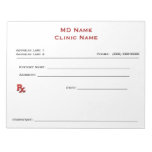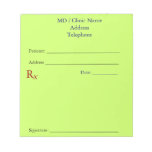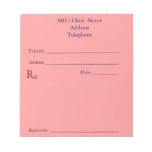Imagine you are a patient rather than a healthcare provider at your practice. Now, complete the following sentence: “I wish my healthcare team would communicate more clearly about…” What was your response?
Patients have strong feelings about what healthcare teams are and are not getting right when it comes to communicating with them. Understanding patients’ wishes helps healthcare teams create better care interactions and support patients both during and in-between appointments. Of course, knowing what patients expect when it comes to communicating about their healthcare can be challenging. But, when healthcare providers understand what patients want and expect from healthcare interactions, they can do a better job of creating healthcare experiences that satisfy patients.
West, a patient engagement communications provider, recently surveyed 1,036 adults and 317 healthcare providers in the United States to learn more about patients’ communication preferences. Survey findings identified 10 types of communication that patients say are important to them. Their communication wish list revolves around themes of prevention, disease management, and billing transparency.
Patients prioritize routine and preventive care outreach
Patients say they want more support from their healthcare providers between appointments so they can better manage their own health at home. West’s survey showed patients think it is important for providers to make communications more prevention focused by helping track lab results (77 percent); recommending and scheduling preventive tests and screenings (71 percent); sending text messages and participating in online chat sessions (60 percent); and using automated text, voice, and email reminders to encourage prevention and promote routine health management. Here’s a closer look at the prevention-focused communications patients want:
Updates about lab tests – Routine screenings and lab tests are an integral part of preventive care. Depending on the circumstances, waiting for lab results can range from mildly annoying to downright nerve-racking. It is not uncommon for patients to experience anxiety, worry, or fear when they are waiting to get their lab results. West survey data revealed nine in 10 providers (91 percent) agree that it is very or extremely important to communicate with patients about the status of their lab results. Healthcare providers can make the wait for test results less stressful by using their patient engagement technology to send patients messages so they know how and when test results can be retrieved.
Recommendations for preventive services – Patients rarely know when they are due for preventive exams or what screenings they need. Worse, many aren’t receiving guidance from their healthcare team. More than one in three patients (36 percent) report their healthcare team does not proactively recommend preventive screenings or they do a poor job communicating which preventive services are needed. Sending automated messages to let patients know they need to make an appointment for an annual exam or preventive screening, such as a mammogram or colorectal cancer screening, is simple and creates awareness about preventive care.
Text Messages – In the past seven years, patients’ interest in texting with providers has doubled. Texting is a widely popular form of communication, so providers shouldn’t be surprised that patients want healthcare professionals to text them. However, many providers have been slow to adopt texting. Nearly one-quarter (24 percent) of patients say they do not receive text messages from their healthcare team. Using patient engagement technology, providers can easily send patients mass or one-to-one text messages about routine care and prevention.
Health management advice – Patients welcome tips and information they can follow at home to maintain their health. A reminder to get 30 minutes of physical activity daily, recipes and healthy eating tips, or an invitation to join a smoking cessation program are just a few examples of the types of automated communications providers can send patients to encourage prevention and wellness. Although patients say they want to receive automated text messages, voicemails, or emails with prevention-themed advice, 21 percent of patients don’t currently receive these communications from their providers.
Disease management support is in demand
Approximately half of adults in the United States face the daily struggle of having to manage a chronic illness, and they don’t want to do it without help from their healthcare team. More than three in four chronic patients say it is very important for providers to give them personalized disease management recommendations based on their specific needs (78 percent) and help them understand their current and target health metrics (76 percent). Sixty-four percent of patients with a chronic illness want to receive medication reminders while 53 percent want providers to administer surveys or check-ins to monitor conditions, assess health risks, and help manage their chronic conditions. Here are examples of how providers can offer patients communication to support disease management:
Personalized recommendations – Nearly all (95 percent) healthcare providers agree it is important to give patients personalized—not generic—recommendations targeted to their conditions. Fortunately, sending disease-specific communications on a mass scale is easy for providers who leverage their patient engagement technology. For example, staff can send a series of emails with tips and information on lowering blood pressure to all of their patients who have been diagnosed with high
Information about health metrics and goals – For patients with chronic diseases, tracking health metrics is the first step to improving and maintaining health. Unfortunately, more than one-third (36 percent) of chronic patients say they don’t get enough information from their providers about health metrics. Patients want more frequent communication to help them understand what their health readings are, or should, be. After discussing health metrics during appointments, providers can follow up and send patients automated messages that clearly define goals for metrics like blood sugar, weight, or blood pressure. This guidance helps ensure patients know what range they need to work toward and whether they are within their target levels for optimal health.
Medication reminders – Patients with chronic diseases often rely on medication(s) to manage their health, but many struggle with adherence. Clear communication about medication can make a big impact. For example, automated reminder messages can help encourage patients to pick up and take prescribed medications. Medication adherence surveys can be used to identify medication issues, so providers can intervene when necessary.
Monitoring surveys – Patients with chronic diseases say they would prefer for their providers to proactively monitor their health and alert them of health risks. Survey check-ins give healthcare teams a way to do that. Teams can send patients automated messages with invitations to complete online surveys on their health. Surveys can be used to identify new and worsening symptoms. When survey data shows patients are struggling, providers can escalate cases and intervene to prevent avoidable issues.
Patients want better billing transparency
In addition to health and wellness themed outreach, patients expect providers to communicate about billing. Seventy-six percent of Americans want providers to give them an easy way to understand and pay for their medical bills. And 80 percent of patients say it is very important for healthcare providers to help them understand what is covered by insurance and how much they are responsible for paying. Here is a look at how healthcare teams can grant patients’ wishes for better communication about billing:
Manage expectations for insurance vs. patient responsibility – Not knowing what to expect when it comes to medical expenses is both common and frustrating for patients. Despite wanting to help patients understand what insurance covers, 35 percent of providers give their organization a poor grade for communicating about out-of-pocket expenses. A simple action like sending an automated message prior to appointments to let patients know they need to make a copayment helps manage expectations.
Make medical bills easy to understand and pay – Patients often receive little to no information about the cost of care until they open their healthcare bills. To eliminate confusion and encourage on-time payments, healthcare teams can begin communicating with patients about billing even before bills are mailed. For example, staff can send automated messages following appointments to let patients know what services they should expect to be billed for and when. Implementing automated reminders for upcoming payments is another easy way providers can improve communication about billing.
These 10 examples are easy ways for healthcare teams to drastically improve healthcare experiences for patients. Most providers have the necessary technology in place and are already using it to deliver communications like appointment reminders. By listening to what patients want and applying existing technology in new ways, healthcare teams can deliver more of the prevention, disease management, and billing information patients expect. In the process, providers can drive better healthcare interactions.
15% Off Medical Practice Supplies
 Manual Prescription Pad (Large - Yellow)
Manual Prescription Pad (Large - Yellow)
 Manual Prescription Pad (Large - Pink)
Manual Prescription Pad (Large - Pink)
 Manual Prescription Pads (Bright Orange)
Manual Prescription Pads (Bright Orange)
 Manual Prescription Pads (Light Pink)
Manual Prescription Pads (Light Pink)
 Manual Prescription Pads (Light Yellow)
Manual Prescription Pads (Light Yellow)
 Manual Prescription Pad (Large - Blue)
Manual Prescription Pad (Large - Blue)
 Manual Prescription Pad (Large - White)
Manual Prescription Pad (Large - White)





 Manual Prescription Pad (Large - Yellow)
Manual Prescription Pad (Large - Yellow)




